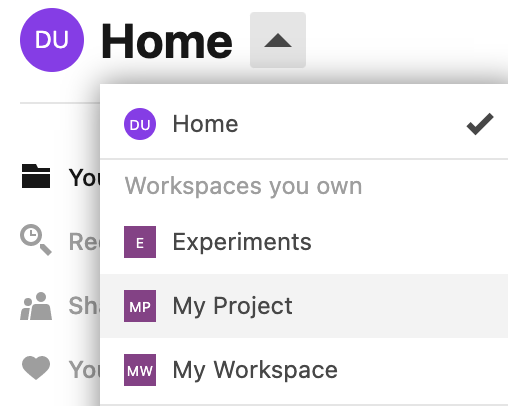Oracle
This is a general procedure of creating an Oracle database connection, including both database types (Oracle and Oracle for 9.X, 10.X, 11.1). Follow these instructions to use the interface of the New connection dialog for this particular database type.
Use the General tab of the New Oracle connection dialog to set up the parameters that are specific for this database type.
Configure an Oracle connection
Open the New Oracle connection dialog. Select the tab for one of the two options:
From the editor, to attach the new database to a specific notebook
From the Home page, to add a database connection to a workspace
Go to or click the Attached data icon on the left-hand sidebar.
Click New connection and select New database connection.
In the New database connection dialog, select Oracle.
On the Home page, select the workspace where you want to create the connection.

Select Databases from the menu under the workspace name.
Click the Add connection button in the upper right corner. The New database connection dialog will open.
In the New database connection dialog, select Oracle.
On the General tab, select the connection type.
SID: to connect by using a unique name of an Oracle instance (a process that runs on the workstation).
Service name: to connect by using an alias to an Oracle instance (or many instances).
URL only: to connect by providing the URL of a pre-built connection.
Proceed based on the selected connection type:
In the Host field, type your server address.
In the Port field, type the port. The default port is 1521.
In the SID field, specify a unique name of Oracle instance (a process that runs on the workstation).
From the Driver list, select the Oracle JDBC driver mode to use with your connection:
Thin: the driver connects to the server directly.
OCI and OCI8: the driver uses native libraries to connect to the server.
Under Authentication, select an authentication method:
User & Password: to use your login and password
No auth: to connect without authentication required
In the User and Password fields, specify your credentials if required by the selected authentication method.
In the Host field, type your server address.
In the Port field, type the port. The default port is 1521.
In the Service field, provide the alias to an Oracle instance that you want to use.
From the Driver list, select the Oracle JDBC driver mode to use with your connection:
Thin: the driver connects to the server directly.
OCI and OCI8: the driver uses native libraries to connect to the server.
Under Authentication, select an authentication method:
User & Password: to use your login and password
No auth: to connect without authentication required
In the User and Password fields, specify your credentials if required by the selected authentication method.
Under Authentication, select an authentication method:
User & Password: to use your login and password
No auth: to connect without authentication required
In the User and Password fields, specify your credentials if required by the selected authentication method.
In the URL field, provide the URL of the pre-built connection you want to establish.
Click the Test connection button at the bottom of the dialog.
Once the connection is successfully tested, click the Save and close button.
Results
If created for a specific notebook, the new connection will be automatically added to the workspace. You can later attach this database to any other notebook from this workspace.
If created for a workspace, this connection is added to the workspace databases and can be attached to any noteboook from this workspace.